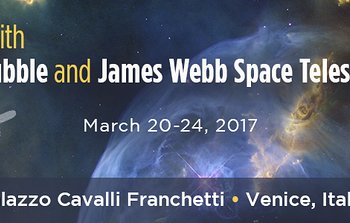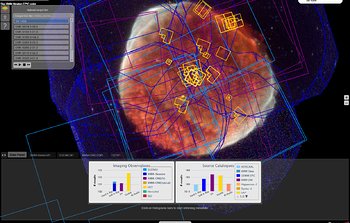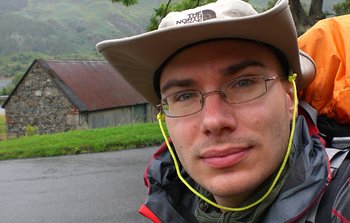Editorial
We have just celebrated Hubble’s 26th year in orbit by releasing a spectacular image of the Bubble Nebula. Spacecraft and instruments are all working great, and the community interest is still very high: more than a thousand proposals were received by the Cycle 24 deadline. The Time Allocation Committee, composed of 156 astronomers from across the globe (of which almost 30 are from Europe), will meet at STScI shortly. They will assess the proposals received and will recommend the best science program for Hubble’s next year of observations to the STScI Director.
Those 26 years in orbit remind us, periodically, that it is necessary to assess the expectations for Hubble’s lifetime, to better plan its future programmes. Just recently a thorough evaluation of all individual critical subsystems was done at GSFC and STScI: and Hubble got an excellent bill of health. If everything goes according to the expectations, Hubble will be a very productive scientific observatory well into 2022 and possibly beyond!
The launch of the NASA/ESA/CSA James Webb Space Telescope (planned for autumn 2018) is approaching fast and we can only begin to imagine the endless scientific opportunities resulting from having these two observatories together in orbit. Between them they will cover wavelengths from UV to mid-IR, and a 100-fold increase in sensitivity in going from Hubble to James Webb. In Cycle 24, we have already offered a special initiative, Preparatory Science for JWST — to encourage the community to start thinking about the great synergies resulting from using the two observatories in complementary fashion.
Together with Pierre Ferruit, the ESA JWST Project Scientist, we decided that it would be very timely to coordinate a community gathering in Europe next year to facilitate this conversation. Hence, the fifth conference of the ESA-sponsored signature series “Science with…” will be broadened to become “Science with the Hubble and James Webb Space Telescopes V”. The event will be held in Venice from 20 to 24 March 2017. The first announcement will go out soon, but in the meantime you can find here some details to start planning your participation. Mark your calendars!
Astronomers traveling to Venice next March will also enjoy an additional treat. Palazzo Cavalli Franchetti will be hosting a major science and art exhibition which will consider humanity’s place and role in the Universe: Our Place In Space. Curated by me with Anna Caterina Bellati, advised by an extraordinary team of scientists and outreach experts, this exhibition will be open from 1 February to 17 April 2017, and will combine splendid Hubble imagery with stunning Italian art to address the key questions that humans have confronted for centuries: what is our place in the Universe? Are there any other worlds out there? What are our origins?
Find here some additional details about Our Place In Space. You will not want to miss it!
Contacts
Antonella Nota
ESA HST Project Scientist, STScI
Email: hubblenewseurope@stsci.edu

|
9 June 2016: The signature series of conferences sponsored by ESA highlighting the scientific impact of the Hubble Space Telescope continues next year with a new event planned in Venice, Italy, from 20 to 24 March 2017.
This time, the scope will be broader. With the NASA/ESA Hubble Space Telescope expected to be a viable observatory well into the 2022 and beyond ...
|
| Read more |

|
9 June 2016: Our place in Space is a travelling exhibition designed to get people thinking about where humanity fits in the grand scheme of our Universe. Astronomers and artists will present their own interpretations of where we are, where we belong, what our past might have been and what our future might look like. For this images made by Hubble — one of ...
|
| Read more |

|
9 June 2016: With the European Hubble Archive (eHST) now fully integrated with the other ESA astronomy archives at the ESAC Science Data Centre in Madrid (see sci15010), Hubble users can unleash their scientific curiosity and start exploring their favourite targets from gamma rays to radio wavelengths with a simple click, using ESASky.
ESASky is a recently developed web application that allows you ...
|
| Read more |

|
9 June 2016: As a European Hubble user, you can access ESA/Hubble’s resources to promote your work to the media and the general public. ESA/Hubble can help by producing and distributing press releases, image processing, web articles, artists’ impressions, and high-definition videos. We can also feature your work on the Hubblecast, which is among the world’s most popular science ...
|
| Read more |